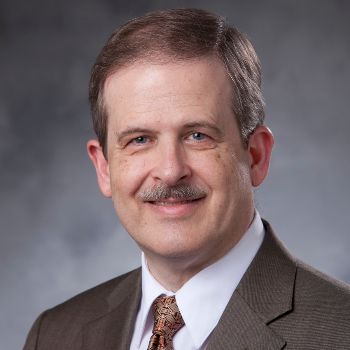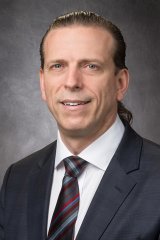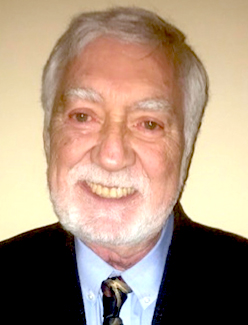The Importance of Creativity in Science
J Dobbins1*, B Tromberg2*, T Mackie3*, M Giger4*, D Jaffray5*, N Ramanujam1*, R Jeraj6*, C Mistretta6*, (1) Duke University Medical Center, Durham, NC, (2) NIBIB, Bethesda, MD, (3) Morgridge Institute for Research, Madison, WI, (4) University of Chicago, Chicago, IL, (5) The University of Texas MD Anderson Cancer Center, Houston, TX, (6) University of Wisconsin, Madison, WI
Presentations
1:02 PM RSNA President, Remarks - M Mahoney, Presenting Author
1:07 PM ASTRO President, Remarks - L Dawson, Presenting Author
1:12 PM AAPM President, Introduction The Importance of Creativity in Science: A Brief History…. - J Dobbins, Presenting Author
1:27 PM Physics and Bioengineering: Converging Disciplines with Creativity and Impact - B Tromberg, Presenting Author
2:12 PM Panel Discussion and Q&A - J Dobbins, Presenting Author
Panel Member - T Mackie, Presenting Author
Panel Member - M Giger, Presenting Author
Panel Member - D Jaffray, Presenting Author
Panel Member - N Ramanujam, Presenting Author
Panel Member - R Jeraj, Presenting Author
Panel Member - C Mistretta, Presenting Author
2:57 PM Closing Comments - J Dobbins, Presenting Author
MO-CD-TRACK 1-0 (Monday, 7/26/2021) 1:00 PM - 3:00 PM [Eastern Time (GMT-4)]
Over the past few decades, the field of medicine has undergone tremendous changes as new paradigms have altered the way in which we understand health and disease, and have accelerated the pace of innovation from laboratory to clinical practice. The speed with which the COVID-19 vaccine has been developed is a good example of modern medicine’s increasingly molecular, prospective, and data driven nature. We can anticipate even greater advances over the next 10-20 years that will make medicine of the future very different than that practiced for the past century.
Where does physics fit into this evolving paradigm of contemporary medicine? How is our role in medicine likely to be different in the next few decades? What can and should we be doing to prepare for this change – and more importantly – to ensure that we contribute the greatest societal impact possible going forward? To answer these questions, we need to look at what drives innovation in science and medicine. In short: an essential element is creativity.
The suggestion that creativity is an essential element of our future as physicists may at first seem surprising, since we often associate creativity with scholars in the arts and humanities rather than the natural sciences. But science is indeed extraordinarily creative. The part of science that involves methodical collection of data and careful analysis may not seem creative at first glance – but the leaps in understanding that occur with new theories and approaches that have transformed how we understand the world inherently involve the highest levels of creativity. Creativity at its core is the ability to see what has not been seen, to imagine what has not been imagined, and to bring that into tangible expression. Key advances in science have involved exactly those kinds of creative leaps. And our ability to envision how we apply physics in new ways in medicine going forward will involve exactly that type of creativity.
We will begin our Symposium by looking at a brief history of creativity in the sciences in order to understand how essential it is to cultivate this important human endeavor. Our keynote speaker, Bruce Tromberg, PhD, Director of the National Institute of Biomedical Imaging and Bioengineering (NIBIB) at NIH will then describe areas in which he sees the greatest need for creativity in the application of physics and engineering to medicine today. He will describe some of the key areas that NIH views as essential drivers of medical advances and where creativity is needed in our discipline of medical physics. We will conclude our Symposium with a panel discussion among several of our distinguished colleagues who have embodied the best of creativity in their careers to create new areas of biomedical science, and will explore how they cultivated creativity in their work. We will also ask them to address those things that we should be doing as a community to ensure that we promote the creativity that will be needed to create our future.
Where exactly will medical physics go in the coming decades? We can anticipate that it might involve new emphases on big data, machine learning, and molecular diagnostics and therapeutics, as examples, and will involve increasing collaboration with our colleagues in other disciplines. While we may not know the exact form this future will take, we can be assured that it will take creativity to get us there. It is our hope that you will leave this Symposium inspired to bring your creative spark to this important effort.
Learning Objectives:
1. Understand how creativity has played an essential role in the history of science and medicine.
2. Understand areas in which creativity is needed today to create the future of physics in medicine.
3. Understand how individual innovators have cultivated creativity in their own careers and what needs to be done to ensure that we as a field lay the groundwork for creativity that will build our future.
Keywords
Not Applicable / None Entered.
Taxonomy
Not Applicable / None Entered.
Contact Email





















